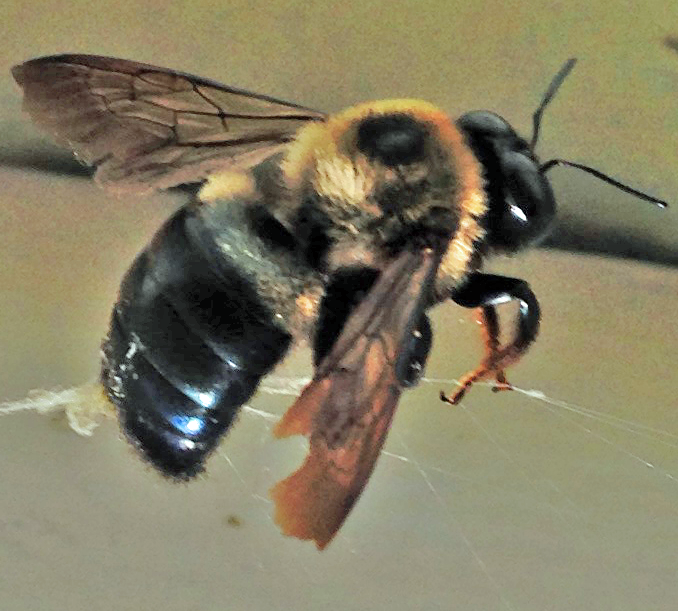
Every year beginning in mid-March to early-April, Extension Agents begin to receive inquiries about managing carpenter bees which are attacking barns, eaves, rafters, and other wooden structures. The bee most commonly responsible for economic damages is typically the large Carpenter bee (see Photo 1)

This is when nesting takes place in structural timbers, fence posts, wooden water tanks, or the like (see Photo 2). Chandler (1958) lists four types of damage done by carpenter bees: weakening of structural timbers,
gallery excavation in wooden water tanks (especially in arid western areas), defecation streaking on houses (see Photo 3) or painted structures, and human annoyance. The last point is included since carpenter bee females may sting (rarely), and male bees may hover or dart at humans who venture into the nesting area.
In general, carpenter bees are a minor problem. Carpenter bees rarely attack painted or varnished wood, while natural wood is more attractive. If there is a problem with carpenter bees, apply a finish to the wood.
These bees often cause problems on structures by boring into the wood surface which is the back face of the trim under the eaves since this surface is usually not painted. A buzzing or drilling sound is heard when the bee is boring into the wood.
If the hole is not visible, often the case when the bee is boring into the backside of trim, look for sawdust on the ground under the hole.
Unpainted, exposed wood is especially attractive to carpenter bees. The most effective deterrent to carpenter bee activities is a painted (oil base or polyurethane) surface.
Insecticide additive paints are available which may repel bees attempting to nest. Wood stains provide little repelling action. Nail holes or exposed saw cuts should be filled in with wood putty or dowels and painted.
If practical, remove severely damaged wood and replace with chemical pressure-treated wood to deter nest construction. To further discourage carpenter bees looking for potential nesting sites, a homeowner should secure all doors, windows, and other building openings during the spring. Non-wood surfaces such as vinyl siding are not damaged by carpenter bees.
A very effective, low cost trap can be constructed from scrap plywood, several of 16 ounce plastic water bottles, a few wood screws, a piece of wire, and a little bit of electrical tape as seen in Photos 4,5, and 6 below. A hole approximately 1/2 inch in diameter works very well. Three or four of these traps positioned at the corners of a building or strategically within a structure can greatly reduce bee numbers with minimal insecticide, structural painting, or other practices. In Photo 4, the trap has only been in place for 5 days. Use of insecticides remains an option.
For more information, contact your local Extension Agent or check out this publication :
Large Carpenter Bees, Xylocopa spp. (Insecta: Hymenoptera: Apidae: Xylocopinae)
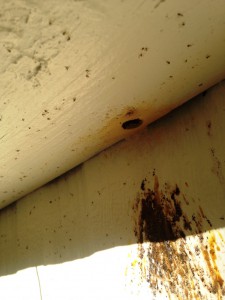
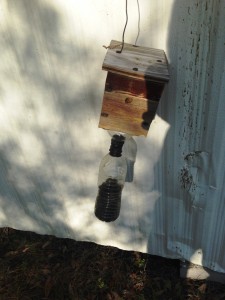
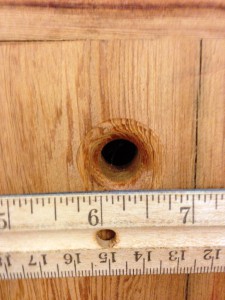
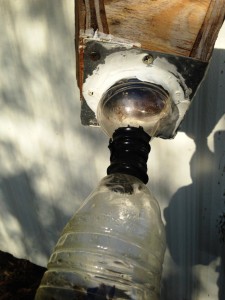
 0
0
